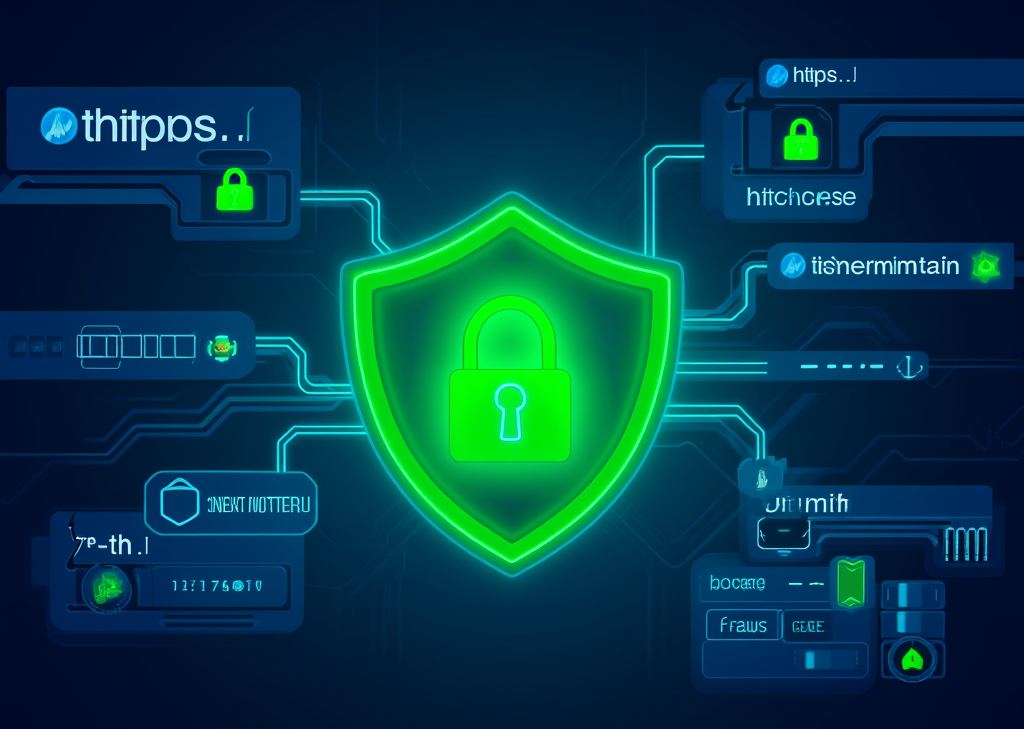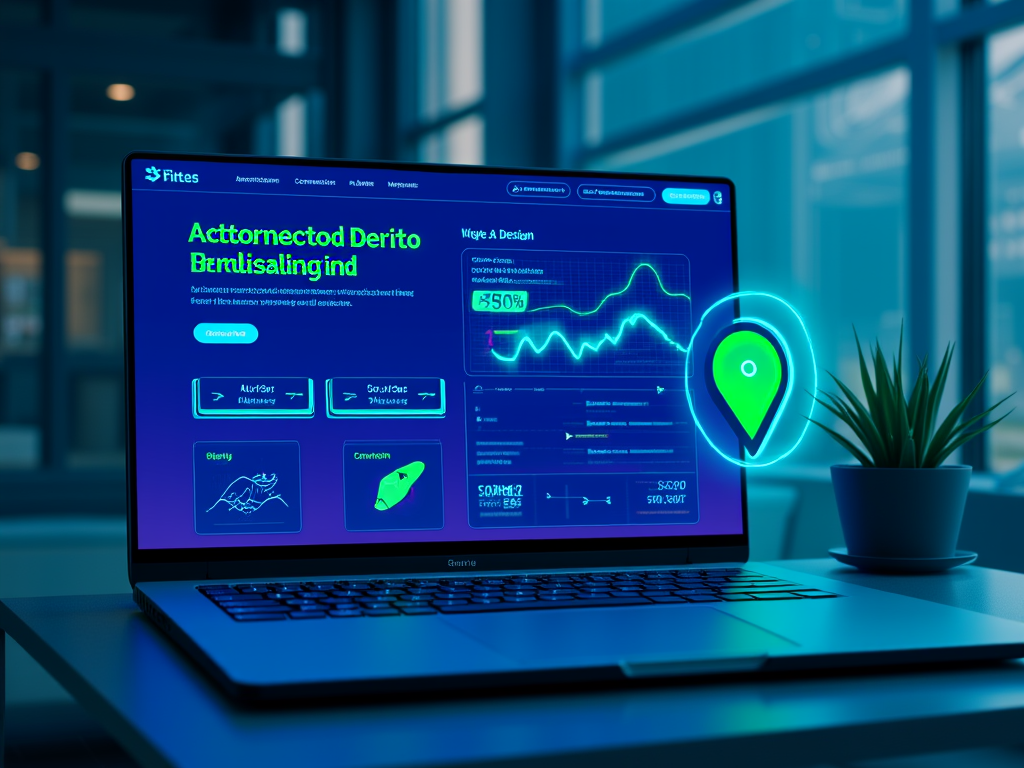How to Use SSL, HTTPS, and VPN for Maximum Web Security
შესავალი
In the bustling digital marketplace, where every click and keystroke carries the weight of personal data and sensitive information, web security isn't just an option—it’s a necessity. The safeguard of online privacy hinges on three pivotal technologies: SSL, HTTPSდა VPNs. Understanding and effectively implementing these tools can vastly enhance your security posture, ensuring your online journeys are as shielded as they are seamless.
Understanding SSL, HTTPS, and VPN
What is SSL and How It Works
Secure Sockets Layer (SSL), though now largely superseded by the more secure Transport Layer Security (TLS), remains a cornerstone of web security. Picture it as the heavy-duty lock on your front door—its purpose is to guard your private data as it travels across the unpredictable terrain of the internet. SSL creates a secure tunnel that encrypts the data exchanged between your device and a server, allowing you to browse and interact without the fear of prying eyes.
When you initiate a connection to a website using SSL/TLS, a few important actions occur:
- Data Encryption: Your sensitive information, whether a credit card number or a personal message, gets scrambled into indecipherable code before transmission. Only the intended recipient can unlock it.
- Authentication: This verifies that the server you are connecting to is indeed who it claims to be, thwarting impostors posing as legitimate sites.
- Data Integrity: Any attempts to alter the transmitted data during its journey are detected, ensuring that what you sent is precisely what the recipient receives.
The Importance of HTTPS
Essentially, HTTPS (Hypertext Transfer Protocol Secure) is the secure version of HTTP, fortified through SSL/TLS encryption. It's akin to adding a fortified gate to that previously mentioned lock—it keeps unwanted visitors out while ensuring that your treasures remain safe within. When browsing a site over HTTPS, users can enjoy several protective benefits:
- End-to-End Encryption: Not just limited to your connection with the website, but sustained throughout your visit, shielding your data from any interception attempts.
- Resistance to Cyberattacks: HTTPS significantly curtails the chances of man-in-the-middle attacks, where malicious entities can hijack the information being exchanged between your browser and the server.
- Trust Indicators: Modern browsers display clear signals (like the green padlock icon) that indicate a site's secure status, fostering trust among users who may be wary of entering sensitive information.
Major platforms, like Google, have begun categorizing websites without HTTPS as insecure, further solidifying the necessity for webmasters to embrace it for not only user protection but also SEO ranking criteria.
What is a VPN and How It Adds a Layer of Security
In contrast to SSL/TLS which secures individual connections, a Virtual Private Network (VPN) acts as a protective veil for all your internet traffic, no matter the nature of your activities. Think of it as a stealth cloak that allows you to traverse the digital realm without ever revealing your true identity or location.
A VPN works by creating an encrypted tunnel that routes your internet activity through a private server, masking your device’s location. It serves multiple functions:
- Data Protection on Public Networks: Imagine working in a café—connecting to public Wi-Fi can expose your data to prying eyes. A VPN mitigates this risk by encrypting your data stream.
- Enhanced Privacy and Anonymity: Your actual IP address is concealed, leaving only the server's address visible to the outside world. This layer of anonymity can be crucial when accessing sensitive sites.
Two primary types of VPNs include:
- SSL VPNs: Often user-friendly, these utilize SSL/TLS for secure connections, proving especially convenient for employees accessing corporate resources remotely via web browsers.
- IPsec VPNs: A bit more complex, these require dedicated client software and encrypt data at the network level—ideal for environments needing robust and comprehensive security measures.
How to Use SSL, HTTPS, and VPN Together for Maximum Security
Now, integrating these technologies could provide an unparalleled security architecture, where each layer reinforces the other.
Step 1: Always Access Sites via HTTPS
The first line of defense begins with ensuring that every website you access employs HTTPS. Check the URL; the presence of the secure prefix, alongside the telltale padlock icon, signifies safety before you send any personal data.
Step 2: Use a VPN for Added Security
Using a VPN while browsing creates an extra layer. It isn't just about being cautious—it's about fortifying your network against potential threats lurking in the shadows of unsecured connections.
Step 3: Ensure Proper SSL Certificate Management
For webmasters, ensuring robust management of SSL certificates is vital. This ensures that connections remain encrypted and secure, while users can engage with confidence.
Step 4: Combining SSL/TLS with VPN
Picture this: you're accessing sensitive information. You connect to your VPN first, then visit your bank's website over HTTPS. Together, these technologies form a powerful duo, protecting your data from local and remote threats alike.
Additional Tips and Best Practices for Web Security
A few extra measures can further reinforce your defenses:
- Strong Password Practices: Combine unique passwords with multi-factor authentication (MFA) to supercharge your login security.
- Timely Software Updates: Like any tool, the effectiveness of browsers and VPN clients relies on keeping them current and patched against vulnerabilities.
- Awareness of SSL Certificates: Vigilance in verifying SSL certificates before entering personal data can be a lifesaver.
As we navigate this intricate landscape of online security, mastering the synergistic use of SSL, HTTPS, and VPNs becomes an empowering strategy in our quest for digital safety. Each tool, while powerful in its own right, gains strength when used together—transforming our security practices into an unbreakable, multifaceted fortress against the unpredictable threats of the digital era.
საუკეთესო შეთავაზებები:
გსურთ შექმნათ თქვენი საკუთარი კომპანიის ვებსაიტი ან შექმნათ თქვენი საკუთარი ონლაინ ბიზნესი ინტერნეტში?
– ვებ ჰოსტინგი
– დომენის რეგისტრაცია
– ვებ-განვითარება
– საიტის შემქმნელი



## Conclusion: Putting It All Together for Maximum Web Security
As we've explored the individual benefits of SSL, HTTPS, and VPNs, it's clear that a holistic approach to web security can dramatically enhance your protection against the ever-evolving landscape of cyber threats. Each component plays a unique role, but collectively, they forge a robust shield that can prevent unauthorized access, data breaches, and much more.
The Symbiotic Relationship Between SSL, HTTPS, and VPN
Understanding how these technologies work together can heighten your vigilance against potential vulnerabilities. Here's a streamlined vision of how they interplay:
SSL/TLS: The Guardian of Data In Transit
Without SSL/TLS, the very foundation of your online transactions would be exposed to risks. Think about the countless emails, financial transactions, and personal messages traversing the web daily; SSL is akin to a well-fortified courier silently guarding these exchanges. Anyone attempting to eavesdrop is met with a wall of encryption, rendering their efforts futile.
HTTPS: The Trust Badge
HTTPS acts as the badge of honor that severs the connection between your data and prying eyes. When you see that secure lock on your browser, it’s a clear signal that the information you send—be it usernames, passwords, or credit card numbers—is protected by encryption and that the website has invested in its security measures. This simple verification can help you make informed choices as you navigate online.
VPN: The Cloak of Anonymity
While SSL/TLS and HTTPS focus on individual connections, a VPN cloaks your entire online presence. Picture yourself at a local café, sipping coffee while accessing your bank account. A VPN shrouds your activity in anonymity by masking your IP address, making your online footprint untraceable. This is especially crucial in our age of public Wi-Fi, where hacking attempts are as common as coffee spills.
Implementing a Layered Security Strategy
Incorporating these security measures into your daily internet usage can seem daunting, but it’s about creating habits. Here’s a practical checklist to help guide you:
Step 1: Default to HTTPS Every Time
Whenever you're about to enter sensitive information, ensure that the site is HTTPS secured. Bookmark your favorite sites that you trust with your data and make them easily accessible, reinforcing a habit of safe browsing.
Step 2: Regularly Use a VPN
Adopt the routine of connecting to a VPN whenever using public Wi-Fi—no exceptions. This can be particularly crucial when accessing work-related websites or any accounts that involve sensitive data. Over time, this will become second nature and provide you with peace of mind.
Step 3: Keep Your Software Up to Date
Ensure that your web browser, VPN software, and devices are updated regularly. Cyber attackers frequently exploit vulnerabilities in outdated software, so staying current is a simple but essential preventative measure.
Step 4: Educate Yourself and Others
Keeping abreast of the latest security threats and sharing tips with friends, family, or colleagues can create a more cyber-aware community. Consider participating in online forums or groups focused on cybersecurity to deepen your understanding and stay informed.
Embracing a Culture of Security
Maximizing web security transcends individual tools; it requires a cultural shift towards prioritizing safety online. Each of us plays a role in fortifying the digital realm, exposing potential vulnerabilities, and implementing practices that mitigate risks. We must inspire each other to value online security as a fundamental aspect of our digital lives.
By continuously engaging with SSL, HTTPS, and VPN technologies, you create not just a shield for your information but a broader vision of safety in a world that increasingly intertwines with technology. Being informed, adaptable, and proactive allows you to navigate the digital landscape with confidence and assurance.
As you embark on this journey of ensuring maximum web security, remember that peace of mind is not just a distant dream. Every step taken today contributes to a safer online experience tomorrow.
Relevant Video Links
For a deeper understanding, consider checking out these informative videos:
საცნობარო ბმულები
SSL/TLS Explained
What is HTTPS?
Benefits of Using a VPN
საუკეთესო შეთავაზებები:
გსურთ შექმნათ თქვენი საკუთარი კომპანიის ვებსაიტი ან შექმნათ თქვენი საკუთარი ონლაინ ბიზნესი ინტერნეტში?
– ვებ ჰოსტინგი
– დომენის რეგისტრაცია
– ვებ-განვითარება
– საიტის შემქმნელი





![Website Hosting Providers in [Local Area]: What to Choose](https://besthosting.ge/wp-content/uploads/2025/08/website-hosting-providers-in-local-area-what-to-choose.jpg)
![WordPress Website Experts in [Your City]](https://besthosting.ge/wp-content/uploads/2025/08/wordpress-website-experts-in-your-city.jpg)

![Web Development Services in [Local Area] for E-commerce](https://besthosting.ge/wp-content/uploads/2025/08/web-development-services-ecommerce-local-area.jpg)